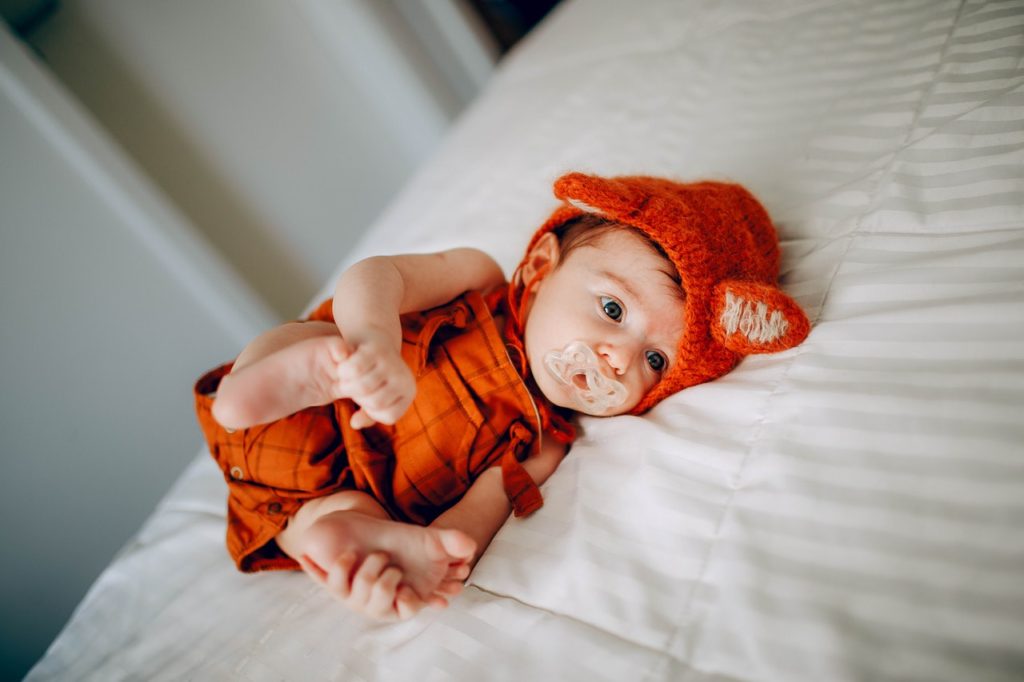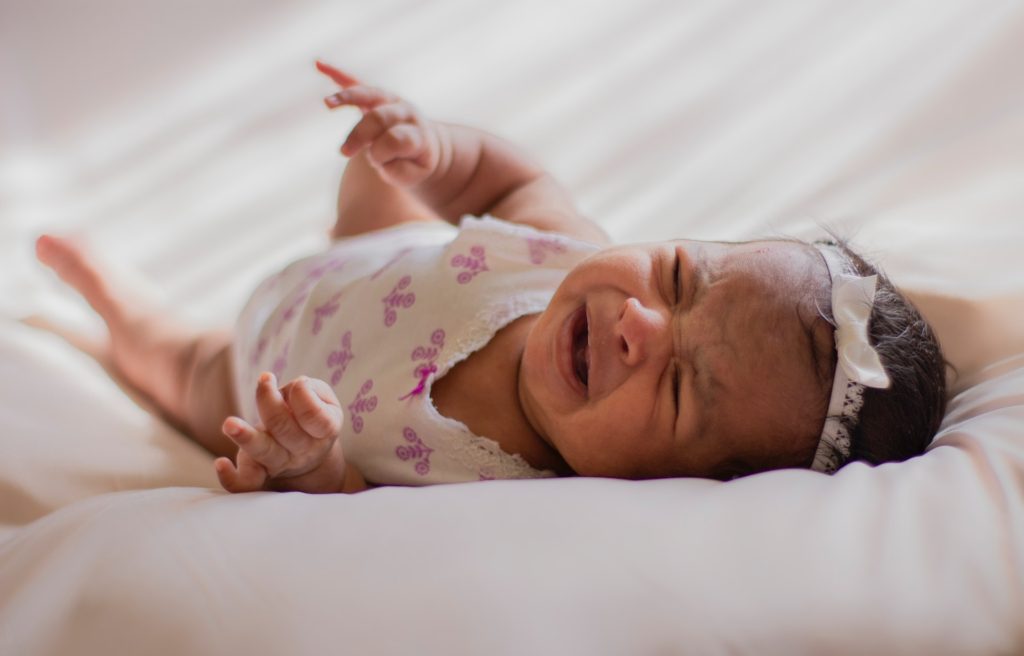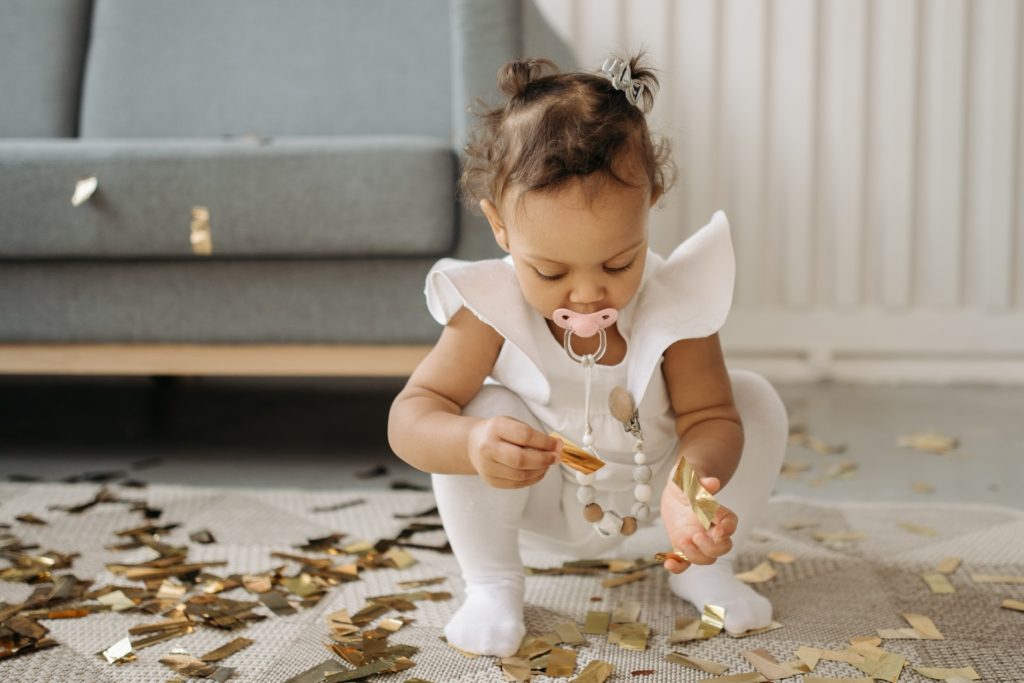Babies have a natural instinct to suck and giving them a pacifier in between feedings can be a great way to satisfy that instinct. But, if you’re a new parent, chances are, you’ve heard a lot of controversy about whether pacifiers are good for babies. Everyone’s got an opinion, but you want to know the facts. What are the pros and cons of giving your baby a pacifier?
Some pros of using a pacifier include helping your baby relax and self-sooth; comforting them in stressful situations; helping them fall asleep; and lowering the risk of SIDS. Some cons of pacifier use include “nipple confusion;” and increased risks of ear infections, dental problems, and addiction.
Read on to learn more about these benefits and drawbacks of giving a baby a pacifier. We’ll also take a look at why you might choose to use a pacifier in the first place, some safety tips for pacifier use, and how to wean your little one when it’s time to stop using the pacifier.
What are the Pros and Cons of Using a Pacifier?

It’s not easy being a new parent. Everyone–your doctor, your neighbor, your mom, your favorite blogger–is all too willing to give you advice on what’s best for your baby. All too often, the pieces of advice contradict each other or simply don’t seem to work in your particular situation.
When it comes to pacifiers, you’ve probably heard many different opinions, and you don’t know what to make of them. Are pacifiers good for babies or not?
Unfortunately, there is good and bad in everything. Pacifiers have many benefits, but they are not without their drawbacks. In this section, we’ll discuss several pacifier pros and cons so you can make an informed decision as to whether a pacifier is a good choice for your baby.
Pro: Pacifiers Satisfy Babies’ Need to Suck
All babies have a sucking reflex that is activated when something touches the roof of their mouth. Even without the reflex being triggered, babies have a natural instinct to suck. The sucking action can sooth them if they are stressed or unhappy and may also provide a sense of distraction and entertainment.
Of course, this need to suck is usually met during feeding, but the need may persist even after the belly is full. A pacifier will often keep a baby entertained and comfortable between feedings, which in turn will help them be less fussy and needy.
Pro: Pacifiers Help Teach Babies to Calm Themselves
Because sucking on a pacifier is soothing to babies, they will learn to use it to calm themselves. Over time, they will begin to realize that the pacifier provides a relaxing escape from sources of stress, so they will often turn to the pacifier on their own when they feel the need.
This helps babies learn, even at a young age, how to help themselves be calm during stress and how to take care of their emotional needs.
And on that note:
Pro: Pacifiers Help Sooth Babies During Stressful Situations
Experiences such as doctors appointments, vaccinations, teething, and feeling unwell can cause babies a lot of extra stress and pain. Having a pacifier to suck on during these times can not only calm and soothe them, but may also provide a welcome distraction from any pain or discomfort they may be experiencing.
Pro: Pacifiers Help Babies Fall Asleep
If your baby is extra fussy at bedtime or not wanting to take a nap, giving them a pacifier may help them to relax, which in turn may show them just how sleepy they are. Calm, relaxed babies will, naturally, go to sleep easier than fussy, agitated babies.
Pro: Pacifiers Reduce the Risk of SIDS
Surprisingly, studies have shown that babies who sleep with a pacifier have more than a 50% lower risk of experiencing sudden infant death syndrome. While no one is sure why or how pacifiers prevent SIDS, the evidence is strong enough that the American Academy of Pediatrics encourages parents to use pacifiers when putting their infant down for naps or bedtime.
Con: Pacifiers May Cause “Nipple Confusion”

Some pacifier critics suggest that giving your baby a pacifier may cause a breastfeeding problem known as “nipple confusion.” The reasoning is that babies may come to prefer the feel of a pacifier nipple and thus will not breastfeed properly.
Fortunately, nipple confusion seems to be more of a theoretical problem than an actual problem, as most babies seem to have little trouble transitioning between sucking on the pacifier and breastfeeding.
That said, experts recommend waiting to introduce the pacifier until your baby is breastfeeding sufficiently well, which is usually around 3 to 4 weeks.
Con: Pacifiers May Increase Risk of Ear Infections and Dental Problems
There is some reason to believe that pacifiers may lead to an increased risk of developing ear infections. One large study suggested that children who use pacifiers one one-third more likely to experience frequent ear infections over children who don’t use pacifiers. The thought is that sucking on pacifiers causes an excess of fluid to build up in the middle ear.
Other studies have concluded that pacifier use, especially in toddlers, can lead to long-term dental problems. Children under age 2 are generally not at risk, but between the ages of 2 and 4, and especially over 4, dental problems become a real concern. This is because the jawbone and gums are fairly soft and may begin to grow improperly.
Con: Pacifiers May Be Addictive
Because pacifiers help babies to relax and feel good, some babies may become addicted to them. If your baby becomes overly distraught or angry if they can’t have their pacifier, then it may be time to think about weaning them, as we’ll discuss a little later on in this article.
Why Do Parents Use Pacifiers?
As you can see from the list above, there are several benefits to using pacifiers. New parents often get exhausted and overwhelmed trying to meet all of their baby’s needs all of the time. Giving the baby a pacifier may produce a calmer, less needy baby, which is certain to take a large amount of stress off of the parents.
A calm, relaxed baby will allow the parents to catch up on some much needed rest. Parents will also feel calmer and more relaxed if their baby is less fussy.
What’s more, there is evidence to suggest that mothers suffering from postpartum depression may have an easier time breastfeeding their baby if the baby regularly uses a pacifier. This is likely due to the fact that babies who use pacifiers tend to be calmer and less fussy, which in turn will help mom feel less stressed.
In addition, babies that cry a lot in public can lead to a lot of stressful social situations for parents. If your baby begins crying in the grocery store, on a plane, or at a family get together, the situation may feel extremely awkward and tense. Parents often give their baby a pacifier in this case to stop the crying and help them relax so they don’t start crying again.
What Are Some Safety Tips for Giving Your Baby a Pacifier?

If you’re wanting to use a pacifier for your baby but are concerned about the problems associated with pacifier use, there are some things you can do to reduce the risks involved. Let’s take a look at some safety tips that may ease your mind and help you to use a pacifier in the best way possible.
Use BPA-Free Pacifiers
Most pacifiers are made of either silicone or latex, but always make sure they are labeled as “BPA-free.” BPA is a harmful chemical used in many different plastic products, and BPA in pacifiers may leach into your baby’s saliva, leading to health problems later on in life.
Again, though, most pacifiers today are made of perfectly safe materials. Just always double-check the packaging to be sure.
Keep the Pacifier Clean
Of course, one of the problems with pacifiers is that they are easily dropped on the floor, in the bathtub, outside in the mud, or any number of less than sanitary places. Many parents will also stick the pacifier in a purse or a pocket when the baby isn’t using it. Always wash the pacifier with warm, soapy water after any of these circumstances.
In fact, it’s best to wash the pacifier between each use. Even if you keep it off the floor in a clean part of the house, such as a cupboard or on top of a dresser, the pacifier will have bacteria from your baby’s mouth and may also collect dust particles and air pollutants.
Keep the pacifier clean so your baby doesn’t get sick.
Don’t Allow Pacifier Sharing
This goes along with the previous point. Each of your children should have their own pacifier and should not be allowed to share, as sharing pacifiers is a great way to spread germs.
Especially if your child goes to daycare or is around other children outside of their immediate family, make sure they use only their own pacifier and that it is properly and frequently cleaned.
Don’t Attach the Pacifier to the Crib or Clothing
One popular trend is to use a cord or lanyard of some sort to attach a baby’s pacifier to clothing or crib railing. The idea is that the baby will always have the pacifier in reach whenever he or she wants it, and it will be kept off the floor in the meantime.
However, the lanyard or cord that is used could pose a strangling hazard, especially if the child is left unattended for even a few minutes. To avoid the risk of strangling, never use any form of cord or string to attach your baby’s pacifier.
Use the Right Size for Your Baby’s Age
Of course, a newborn’s mouth is much smaller than a 2-year-old’s mouth. Make sure you’re buying the right size for your baby’s current age and be sure and replace the pacifier as the baby grows.
No matter what size you’re buying, it’s a good idea to choose pacifiers with air holes around the mouth shield. This will allow air to flow freely around your baby’s mouth.
Monitor Your Baby While Using the Pacifier
Keep your baby close while he or she is using the pacifier, preferably within sight. Like any small objects, even appropriately sized pacifiers can become choking hazards if young children are left unattended while using them.
If your baby sleeps with a pacifier, use a baby monitor to keep track while they sleep. Monitoring your baby will prevent tragic accidents from happening and will also help you see when your baby drops the pacifier, allowing you to clean it before the baby uses it again.
Wean Your Child from the Pacifier by Age Two
If possible, it’s best to begin weaning your baby between the ages of 6 months and 1 year, as this is the time when they are most likely to develop ear infections and dependence on the pacifier. That said, if your child doesn’t experience frequent ear infections and is not overly possessive of their binky, they can safely use it until the age of two.
Once they reach their second birthday, however, it’s important to wean them from the pacifier to avoid serious and lasting dental problems as well as increased risk of addiction.
Of course, depending on the baby, weaning them from the pacifier may be easier said than done. How do you help them break the sucking habit if they are particularly attached to their pacifier?
How to Wean Your Baby from Pacifiers

While some toddlers may stop using pacifiers on their own, others may need extra help with weaning. If your child is between 2 and 4 and showing no signs of wanting to part with their pacifier, it may be time for you to take action.
Here are some tips to help the weaning process go more smoothly for both you and your little one.
Wean the Child Gradually
If your child is used to having his or her pacifier all of the time, start by removing the pacifier for small amounts of time throughout the day. Start with half an hour or an hour, or whatever seems appropriate for your unique situation.
Over time, gradually increase the length of time your child is without their pacifier. You could try going without for longer periods of time, or increasing the number of short time periods throughout the day.
For some toddlers, this gradual weaning will give them time to adjust and will help them to slowly get used to less and less time with their pacifier.
Offer a Compromise
Perhaps your child is no longer allowed to have the pacifier during the day, but you still allow them to have it at night or during naptime.
Alternatively, you could give them something they want to replace the pacifier–a new stuffed animal, a special blanket, a toy they’ve had their eye on.
Use Positive Reinforcement
It’s important to praise and encourage the child when you notice good behavior. This holds true for weaning them from the pacifier as well. Praise your child when they go for a period of time without asking for it or fussing when they don’t get it. Encourage them to keep up the good behavior.
The more you praise your child for behaving as you want them to behave, the more they will start to do it on their own.
Try Cold Turkey
For some children, it works best to simply quit the pacifier habit all at once. If you’ve tried a more gradual approach and it hasn’t been going so well, try quitting the pacifier cold turkey. Your child may protest for a while but may ultimately adjust more quickly.
Don’t Give In
Some children will be very whiny and fussy when you take the pacifier away. Others may throw temper tantrums.
Whatever negative behavior your child may demonstrate during this process, do not give into their demands. Giving in only reinforces the bad behavior and tells the child that all they have to do to get their way is to throw a fit.
When you’ve said it’s time for the pacifier to go away, stand your ground. This is a necessary part of growing up, and your child will eventually get used to life without the pacifier.
Final Thoughts
Like everything in life, there are both pros and cons to giving your baby a pacifier. Having something to suck on may help the baby relax and handle difficult situations, and using a pacifier may even reduce the risk of SIDS. That said, pacifiers can also lead to an increased risk of ear infections, dental problems, and dependence on the pacifier.
If you choose to give your child a pacifier, follow the safety tips outlined in this article, and begin weaning your little one by the age of two, if not sooner. Doing so will help you avoid many of the problems most often associated with pacifiers.
Sources Used
Recent Posts
Having twins can be scary, overwhelming, and hard. But, it's also beautiful, fun, and adorable! Let's focus on the positives with these cute and funny stories about raising twins. Comment which one...
Newborn photography is a beautiful way to capture the fleeting moments of your baby’s earliest days. These precious photos become cherished keepsakes, encapsulating the joy and tenderness of...
